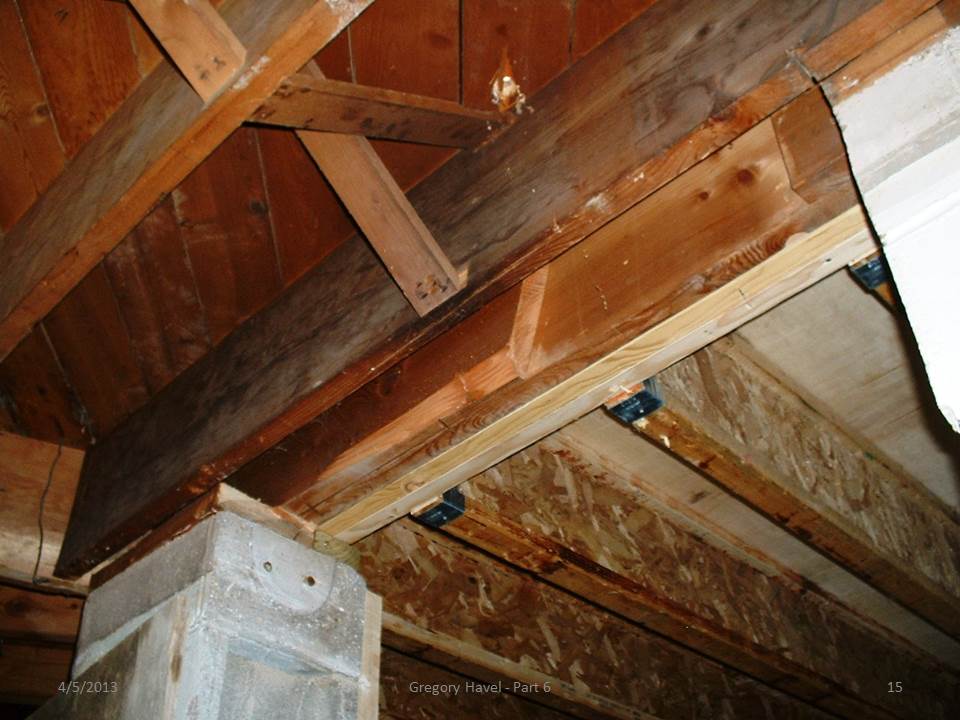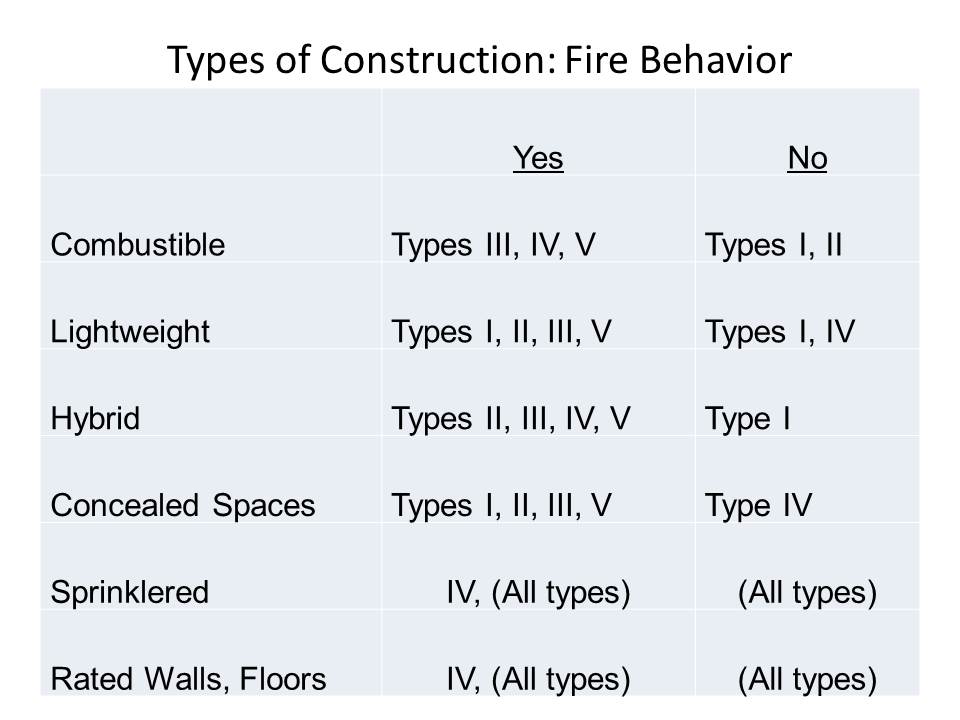By Gregory Havel
From our Firefighter I and II classes, we can recall the five “types” of building construction that are used by the building and fire codes. These are based on the amount of combustible materials in the structure.
- Type V or wood frame has combustible materials anywhere in the structure, including load-bearing and non-bearing walls, floors, roofs, trim, and furnishings
- Type IV or heavy timber has combustible (but not easily ignitable) columns, beams, floors, roofs, trim, and furnishings; the load-bearing and exterior walls are masonry
- Type III or ordinary has combustible interior partitions and load-bearing walls, floors, roofs, trim, and furnishings, with exterior walls of masonry
- Type II or non-combustible has combustible trim and furnishings; may have combustible non-loadbearing partition walls. It may have combustible blocking to support cabinets, railings, etc., inside walls that are otherwise non-combustible
- Type I or fire-resistive is permitted combustibles as trim and furnishings
Today, these five construction types are no longer as clear-cut as they used to be because of the addition of lightweight and manufactured lumber materials, as well as the use of materials that were formerly found only in Type II or I construction. Building code officials consider these to be “hybrids,” and will classify them according to the most combustible components that are used. A lightweight truss and wood frame building supported on structural steel is a hybrid, and will be classified as Type V (photo 1).

(1)
The distinction between the building construction “types” is further blurred because of remodeling and renovation. Buildings are usually remodeled using the lightest and least expensive materials that meet the building code, rather than matching the new materials to those used in the original construction. This leads to the introduction of unprotected structural steel into Type II and IV buildings; and the introduction of manufactured wood, I-joists, and wood trusses into century-old Type III and V buildings (photo 2).

(2)
These “hybridized” buildings will no longer have the behavior that we expect of them under fire conditions. The behavior of the fire itself will change: it is likely to spread faster and burn hotter than we might anticipate in a building of this age and type.
Rather than focusing on the type of construction that we see from the street upon our arrival, we need to focus on what we know of fire behavior in buildings, the probable routes of fire spread, and the probable speed with which it will spread.
The key points to this approach are:
- Combustible: To what extent are load-bearing assemblies combustible? These will be found in Types III, IV, and V. If in doubt, we should assume that load-bearing assemblies are combustible.
- Lightweight: To what extent are materials “lightweight” I-joists, wood trusses, manufactured wood, or steel stud and truss assemblies? These can be found in any Type. If in doubt, assume that load-bearing assemblies are lightweight, with no inherent fire resistance.
- Hybrid: Any type of building except for Type I can be a hybrid. If in doubt, assume that it is a hybrid.
- Concealed (void) spaces may be present in any type of construction except for true Type IV. If in doubt, we should assume that concealed spaces are present, and that they are interconnected.
- Sprinklered: A true Type IV built since 1880 has an automatic fire sprinkler system. Any other type may have sprinklers. This note is a “must” on our preincident plan.
- Rated wall or floor-ceiling assemblies will be present in a true Type IV built since 1880. Any other type may also have these. If the building has been remodeled (what building hasn’t?) these rated assemblies may have been penetrated, and may no longer be reliable.
Photo 3 shows the above information in a chart.

The key to using this approach is to use it in preincident planning, so that we can best predict the paths of fire extension, the routes that the products of combustion will follow, and the best locations at which to stop the fire.
If we arrive at a fire in an unfamiliar structure for which we have no preincident plan, for the protection and safety of firefighters we must assume that the structure is:
- Combustible, of lightweight and manufactured materials, with hybrid components
- Surrounded with interconnected concealed spaces
- Unsprinklered
- Constructed without rated walls and floor-ceiling assemblies
As these assumptions are found to be not true, we will have more options available to us in fighting the fire.
When these assumptions are found to be true, we will have the same options for fighting the fire that we used in our original incident action plan, and we will have exposed our personnel to no unnecessary risk.
Download this article as a PDF HERE.
 Gregory Havel is a member of the Town of Burlington (WI) Fire Department; retired deputy chief and training officer; and a 30-year veteran of the fire service. He is a Wisconsin-certified fire instructor II, fire officer II, and fire inspector; an adjunct instructor in fire service programs at Gateway Technical College; and safety director for Scherrer Construction Co., Inc. Havel has a bachelor’s degree from St. Norbert College; has more than 30 years of experience in facilities management and building construction; and has presented classes at FDIC.
Gregory Havel is a member of the Town of Burlington (WI) Fire Department; retired deputy chief and training officer; and a 30-year veteran of the fire service. He is a Wisconsin-certified fire instructor II, fire officer II, and fire inspector; an adjunct instructor in fire service programs at Gateway Technical College; and safety director for Scherrer Construction Co., Inc. Havel has a bachelor’s degree from St. Norbert College; has more than 30 years of experience in facilities management and building construction; and has presented classes at FDIC.
MORE CONSTRUCTION CONCERNS

